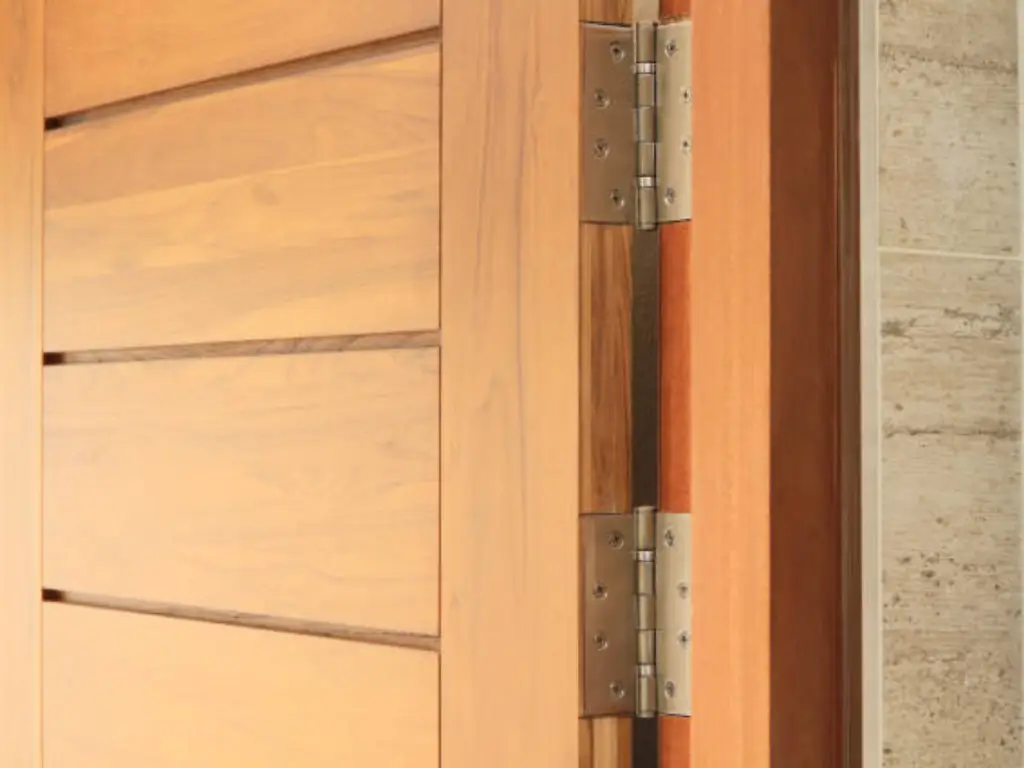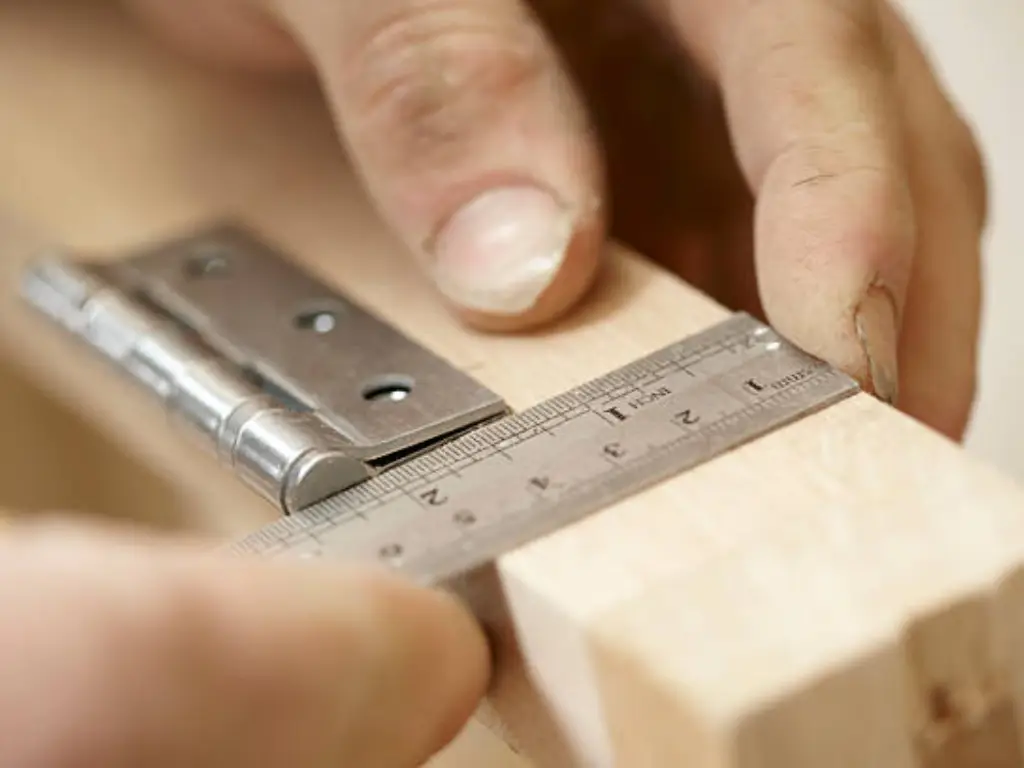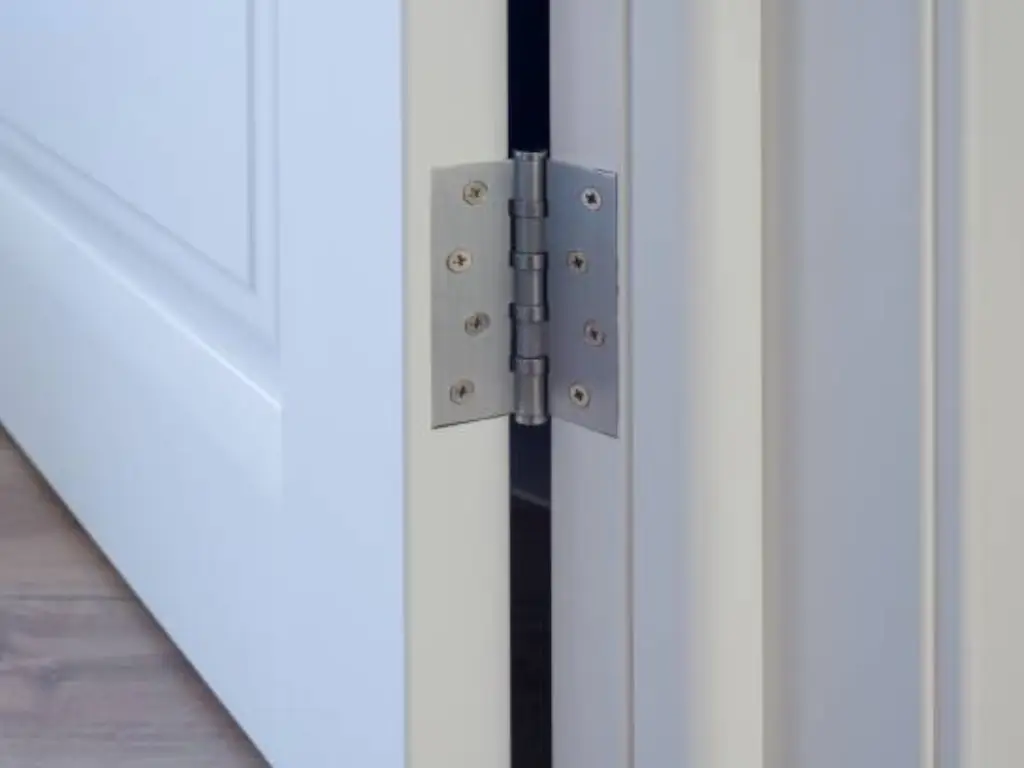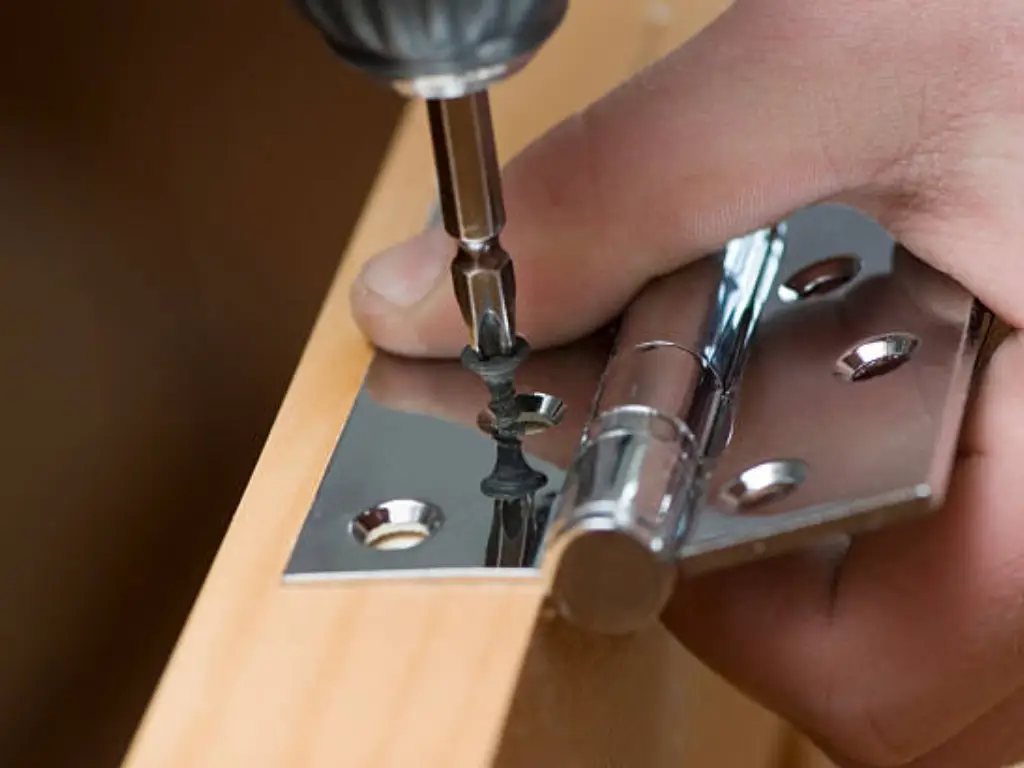Introduction
For many, thinking of installing a door may not always mean that the door hinge is of paramount importance. Nonetheless, most functions regarding the door, including durability and smooth operation, heavily depend on the appropriate selection of the hinge size. Correctly installing a new door, changing old hinges, or working with more advanced systems like industrial doors or gates requires proper hinge sizing knowledge. This guide will help you understand how to select, measure, and install the appropriate door hinges for any application.
Why is Hinge Size Important?
More than an aesthetic decision, choosing the right door hinge sizes impacts the way a door operates over time—its long-term versatility and durability. An improperly sized enigmatic hinge can lead to it getting out of alignment, the door sagging or in the worst case, the frame and door getting inflicted with damages, which will cost a lot to solve. All of these problems stem from the hinge being either too large or too small for the handpicked door.
In the case of heavier doors, the hinges ought to be bigger than they are sized for, but not too large to ensure the door remains level while being used. For exterior doors, the hinge will need to be wide enough to facilitate proper positioning. Additionally, too much friction on the hinge will make neither the door nor the frame withstand the stress while creating a barrier between them. Finding a middle ground while taking all attributes like weight, thickness of the door, and frequency of usage into account is the key, while also providing the enclosure with a long-lasting sealed barrier.
Understanding Door Hinges

Before selecting the right hinge size, it’s important to understand the basic structure and types of door hinges available.
Basic Components of a Hinge
| Component | Description | Function |
| Hinge Leaves | The two plates of the hinge that are attached to the door and the door frame. | Allow the hinge to pivot and bear the weight of the door. |
| Hinge Pin | The rod that connects the two hinge leaves. | Holds the leaves together and enables door movement by allowing it to swing open and closed. |
| Knuckle | The circular part where the two hinge leaves meet. | Crucial for smooth door operation and load distribution. |
| Screw Hole Spacing | The placement of holes on the hinge to secure it to the door frame. | Ensures proper alignment and secure attachment to the door frame. |
Common Types of Door Hinges
Different types of door hinges are designed for specific applications. Here are a few common ones:
| Hinge Type | Main Features | Advantages | Common Sizes |
| Butt Hinges | Simple, two-leaf design with a pin in the middle. | Versatile, easy to install, ideal for residential doors. | 3″, 4″, 4 1/2″, 5″ |
| Ball Bearing Hinges | Contains ball bearings between the hinge leaves for smoother operation. | Reduces friction, ideal for heavy doors and high-traffic use. | 3″, 4″, 4 1/2″, 5″ |
| Concealed Hinges | Hidden when the door is closed, typically used in cabinets. | Sleek, modern appearance, saves space, often used for cabinets. | 35mm, 40mm, 45mm (diameter) |
| Flag Hinges | Hinges with a removable pin, are often used in industrial settings. | Allows easy removal of doors, great for industrial uses. | 4″, 5″, 6″ |
| Rising Butt Hinges | Raised design, slightly elevates the door when opened. | Ideal for uneven floors, and provides clearance for door movement. | 4″, 5″, 6″ |
| Continuous (Piano) Hinges | A long hinge runs the entire length of the door. | Provides even support, perfect for heavy-duty doors. | 48″, 72″, 96″ (or custom lengths) |
| Spring Hinges | Contains a spring mechanism that automatically closes the door. | Self-closing is great for commercial or residential doors needing automatic closure. | 3″, 4″, 4 1/2″ |
Additional Notes:
Butt Hinges: Most commonly used in residential doors, these hinges come in standard sizes like 3″ to 5″ and fit a wide range of door types.
Ball Bearing Hinges: These are specifically useful for heavy-duty doors, like those in high-traffic areas, and offer better durability over time.
Concealed Hinges: Common in modern cabinet doors and offer a clean look with no visible hinge when the door is closed.
Flag Hinges: Used in removable door applications, particularly in industrial or commercial settings where doors need to be taken off regularly.
Rising Butt Hinges: Great for doors that need to be slightly lifted to avoid dragging on the floor, especially in areas with uneven flooring.
Continuous Hinges: Ideal for doors that require more consistent support, like in commercial or high-use environments, and provide a more stable swing.
Spring Hinges: Useful for doors that need to close automatically, commonly found in bathrooms, kitchens, or commercial settings.
If you would like to learn more about different types of hinges, please click on the following link: https://www.maxavegroup.com/types-of-hinges/.
How to Measure Door Hinges
Choosing the correct hinge size starts with accurate measurement. Here’s what you need to consider when measuring:

Key Measurements to Consider
| Key Measurement | Description | Importance | Specific Recommendations |
| Height and Width | The size of the hinge is typically 3″ x 3″ for lightweight doors and 4″ x 4″ for heavy-duty or exterior doors. | Determines the hinge’s suitability for different door types. Heavier doors need larger hinges for better load distribution. | 3″ x 3″: Suitable for interior doors (lightweight, under 50 lbs). 4″ x 4″: Best for standard exterior doors or heavier interior doors (50-100 lbs). 4 1/2″ x 4 1/2″: Ideal for heavier exterior doors (up to 150 lbs). 5″ x 5″: For very heavy-duty doors, such as large metal or security doors (150 lbs and above). |
| Thickness | The thickness of the hinge is essential for strength. Typically ranges from 0.090″ to 0.180″. | Thicker hinges are required for heavier doors to support the weight and provide durability. | 0.090″ (Light Duty): For doors under 50 lbs. 0.125″ (Standard Duty): For doors up to 100 lbs. 0.135″ to 0.150″ (Heavy Duty): For doors up to 150 lbs. 0.180″ or thicker (Extra Heavy Duty): For very heavy doors, security doors, or commercial doors (150 lbs and above). |
| Knuckle Size | The circular part where the two hinge leaves meet. Sizes generally range from 1/2″ to 1″. | Affects the hinge’s durability and how well the door moves. Larger knuckles help distribute weight evenly. | 1/2″ Knuckle: Standard for light-duty interior doors. 5/8″ Knuckle: Common for residential exterior doors. 3/4″ or larger Knuckle: Ideal for heavy-duty or commercial doors. Larger knuckles provide better weight distribution and smoother operation. |
| Screw Hole Pattern | The pattern and placement of holes on the hinge to secure it to the door frame. | Ensures the hinge fits securely into the door frame, preventing instability or damage. | Ensure the screw hole pattern matches the door frame. Common hole spacings: 1 1/2″ to 2 1/2″ apart. For larger doors, use more screws to evenly distribute the load and improve stability. |
- Height and Width: The standard hinge sizes generally range from 3″ x 3″ for lightweight interior doors to 4″ x 4″ for heavy-duty doors or exterior doors. Heavy-duty doors often require larger hinges for better load distribution.
- Thickness: The thickness of the hinge is essential for strength. For heavier doors, you need a thicker hinge to handle the additional weight.
- Knuckle Size: The size of the knuckle affects both the hinge’s durability and the door movement. Larger knuckles tend to distribute the weight of the door more evenly.
- Screw Hole Pattern: Ensuring that the screw hole pattern matches your door frame is vital for a secure and stable fit.
Measurement Units: Inches vs. Millimeters
Hinges are typically measured in inches in the U.S. and millimeters in many other regions. Conversion between the two is simple:
- 1 inch = 25.4 mm
- 3 inches=76 mm
- 4 inches=102 mm
- 4.5 inches=114 mm.
Step-by-Step Guide to Measuring Hinges
Remove the Hinge
Start by using a screwdriver to take off the hinge from both door components and the door frame. Each fastener needs complete unscrewing before removing all screws. The screws you remove should be placed safely because you might require them for door assembly later. Place the detached hinge on a flat stable surface that should be level such as a workbench or table. The quick measurement process will be more accurate and simple because proper hinge alignment is possible.
Measure the Height, Width, and Thickness of the Hinge
- Height: Measure the height of the hinge leaf from top to bottom, including the pin. For standard butt hinges, this is usually between 3″ and 6″ depending on the door’s weight and usage.
- Width: Measure the width of the hinge leaf from one side to the other, making sure you measure the widest point of the hinge when it is closed. Most standard hinges range from 1 1/2″ to 3″ in width.
- Thickness: Measure the thickness of the hinge, which impacts its load-bearing capacity. A typical hinge thickness ranges from 0.090″ (light-duty) to 0.180″ (heavy-duty). Thicker hinges are essential for heavier doors.
( Use a caliper or a precise ruler to get accurate measurements, especially for the thickness. )
Double-Check the Screw Hole Spacing
You need to accurately measure the distance that separates the centers of all screw holes found on the hinge. You should measure the hole spacing on both the door leaf and frame leaf because the measurement depends on the chosen hinge type. The distance between screw holes in typical hinges ranges from 1 1/2″ to 2 1/2″ yet this measurement may differ according to the selected hinge type. After measuring the distances, check that the screw hole pattern matches the original holes on your door frame. When replacing old hinges, verify that the new ones have hole spacing that matches the original setup to achieve proper installation.
Record All Measurements
After measuring the hinge’s height, width, thickness, and screw hole spacing you must record all values in a clear manner for future use. The correct details for purchasing or ordering new hinges can be obtained through this process. Note down the dimensions of unique hinge types, including concealed and continuous varieties, since their specifications differ from typical hinges.
Check for Compatibility
Review your measurements before verifying that they match your door and frame dimensions. Verify that the hinge dimensions match the dimensions of your door and frame to achieve a correct installation. Verify that heavy duty hinges can handle both the weight of the door and the frame dimensions since larger hinges might be needed for this purpose.
Door Hinge Size Chart
The door hinge size chart below provides a quick reference to select the right size based on the door type.
| Hinge Size | Applicable Door Thickness | Hinge Length | Hinge Width | Hinge Thickness | Max Door Weight | Recommended Use |
| 3″ (75mm) | 1 3/8″ – 1 3/4″ (35mm – 45mm) | 3″ (75mm) | 1 1/2″ (38mm) | 0.105″ (2.7mm) | 40-50 lbs (18-22kg) | Light interior doors, Room doors |
| 4″ (100mm) | 1 3/8″ – 2″ (35mm – 50mm) | 4″ (100mm) | 2″ (50mm) | 0.125″ (3.2mm) | 50-70 lbs (22-32kg) | Interior room doors, Office doors |
| 4 1/2″ (115mm) | 1 3/8″ – 2 1/4″ (35mm – 57mm) | 4 1/2″ (115mm) | 2 1/2″ (63mm) | 0.135″ (3.4mm) | 70-90 lbs (32-40kg) | Exterior doors, Heavy interior doors |
| 5″ (125mm) | 1 3/4″ – 2 1/4″ (45mm – 57mm) | 5″ (125mm) | 2 1/2″ (63mm) | 0.145″ (3.7mm) | 90-120 lbs (40-54kg) | Exterior doors, Heavy security doors |
| 6″ (150mm) | 1 3/4″ – 2 1/4″ (45mm – 57mm) | 6″ (150mm) | 3″ (76mm) | 0.175″ (4.4mm) | 120-150 lbs (54-68kg) | Heavy-duty doors, Security doors |
| Heavy-duty Hinge | 2″ (50mm) and above | 6″ (150mm) | 3″ (76mm) | 0.200″ (5mm) | 150 lbs (68kg) and above | High-security doors, Commercial doors |
Notes:
Door Thickness: Refers to the thickness of the door, with different hinges suited for varying thicknesses.
Hinge Length: The length of the hinge, generally dictates the size and weight of the door it can support.
Hinge Width: The width of the hinge when opened.
Hinge Thickness: The thickness of the hinge, which impacts its load-bearing capacity.
Max Door Weight: The maximum door weight the hinge can support.
Recommended Use: Recommended scenarios or types of doors where the hinge is most suitable, like interior, exterior, or heavy-duty doors.
This chart helps you choose the correct hinge size based on the door type, ensuring the proper weight distribution and smooth operation.
Choosing the Right Hinge for Your Door

When selecting the right door hinge size, several factors come into play:
Factors to Consider
- Weight & Size of the Door: The weight of the door determines the size requirement for hinges to handle the extra weight. Ball-bearing hinges serve as the best choice for heavy doors that experience frequent use. As a general rule, larger and heavier doors require more robust hinges to ensure long-lasting performance.
- Material: The material selection for hinges determines their operational capabilities. Stainless steel hinges work best for exterior doors because they resist rust, yet solid brass hinges create an attractive appearance on interior doors.
- Environmental Factors: Outdoor doors require weatherproof hinges because exposure to elements will result in rust and corrosion damage.
Special Hinges for Specific Needs
Special hinges exist for specific applications that are necessary for certain door types.
- Fire-Rated Hinges: All commercial buildings must follow safety codes through their door installations.
- Self-Closing Hinges: These hinges work best for security doors and fire doors since they activate automatic closure after opening.
- Heavy-Duty Hinges: Heavy gates and industrial doors need these hinges because they deliver extra durability and strength, handling greater loads and providing better performance for demanding applications.
Discover the Perfect Hinge for Your Doors with Maxave
More Than A Furniture Hardware Manufacturer
Your Sales Growth Specialist
Maxave is aware of the quality and reliability required for door hardware. As a manufacturer of furniture hardware, we produce an extensive array of hinges in all sizes, including top hinge options for specialized applications. Be it for standard, heavy-duty hinges, or specialized doors, rest assured we can help you with the perfect solution. Our precision-crafted hinges guarantee self-sustaining performance and operational efficiency. Choose Maxave for high-tech, exceptional-quality cabinet hinges that provide style and smooth operation to your doors. Noticeably different, the Maxave way proves where innovation integrates with quality assurance. Contact us today and let us help you improve your space!
Installing and Maintaining Your Hinges
Step-by-Step Installation Guide

Once you’ve selected the correct door hinge size, follow these steps to install it:
- Mark screw holes accurately on both the door and frame using a tape measure.
- Align the hinge with the edge of the door frame.
- Secure screws tightly to hold the hinge in place.
- Test the door movement to ensure it swings smoothly.
The first step is to measure precisely where the screws will go to achieve proper alignment. Measure the spots for screw placement on both the door and door frame using a tape measure. The hinge must be placed evenly so it touches the entire door edge without any space between them. A pencil helps you create tiny marks on the door frame to indicate screw hole positions.
After making the marks position the hinge directly against the door edges and frame edges. The proper function of the hinge depends on this alignment because it allows for smooth door movement. Use screws to fasten the hinge while tightening them until the hinge remains stable. Open and close the door several times to check its movement after installing the hinge. Check for free movement without dragging or looseness during door operation. Check the door movement after installation because minor adjustments to the hinge position can help eliminate resistance.
Pro Tip:
When replacing an old hinge handle the door frame carefully to prevent damage during removal. The new hinge must have the same pattern of screw holes and backset dimensions to maintain proper alignment.
Maintenance Tips for Longer Hinge Life
Regular maintenance of your door hinges will help you maintain their optimal condition. Regular lubrication of the hinges stands as one of the fundamental maintenance steps. The lubrication process eliminates squeaks while keeping the door moving smoothly, which protects the hinge mechanism from excessive wear. Regular inspections of the screws which maintain the hinges are essential for proper maintenance. The stability and performance of the hinge depend on regular screw tightening because loose screws can affect its stability. Regular cleaning of stainless steel hinges remains important for their proper maintenance. Regular cleaning of stainless steel hinges helps protect their delicate appearance while stopping rust formation, thus allowing them to work efficiently for extended periods. When selecting hinges, consider a variety of finishes to complement your space and ensure you choose the right finish for both aesthetic appeal and durability. Regular maintenance of your door hinges through these tasks will help you achieve maximum lifespan and optimal performance.
Conclusion
Selecting the appropriate size for a door hinge is crucial as it determines optimal door functionality, alignment, and longevity of use. By taking into account the door weight, material, and environmental factors while using the door hinge size chart, you can select a size that will enable your door to function properly for many years to come.







